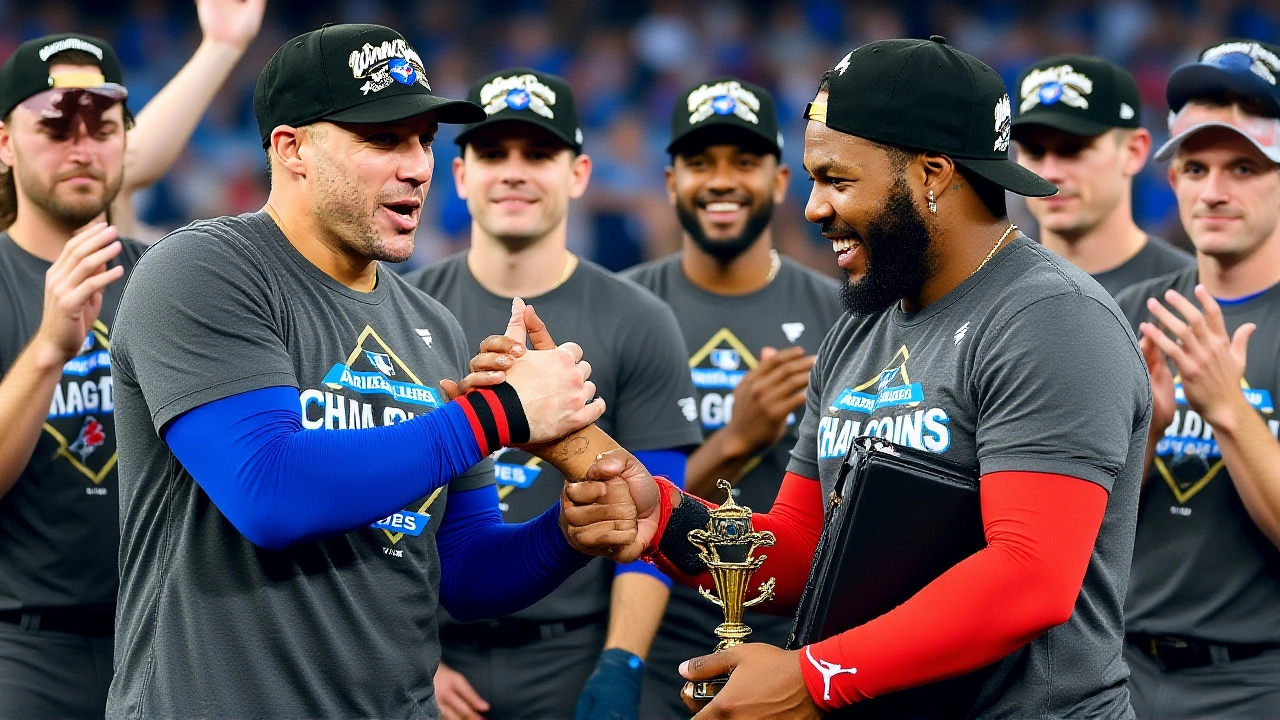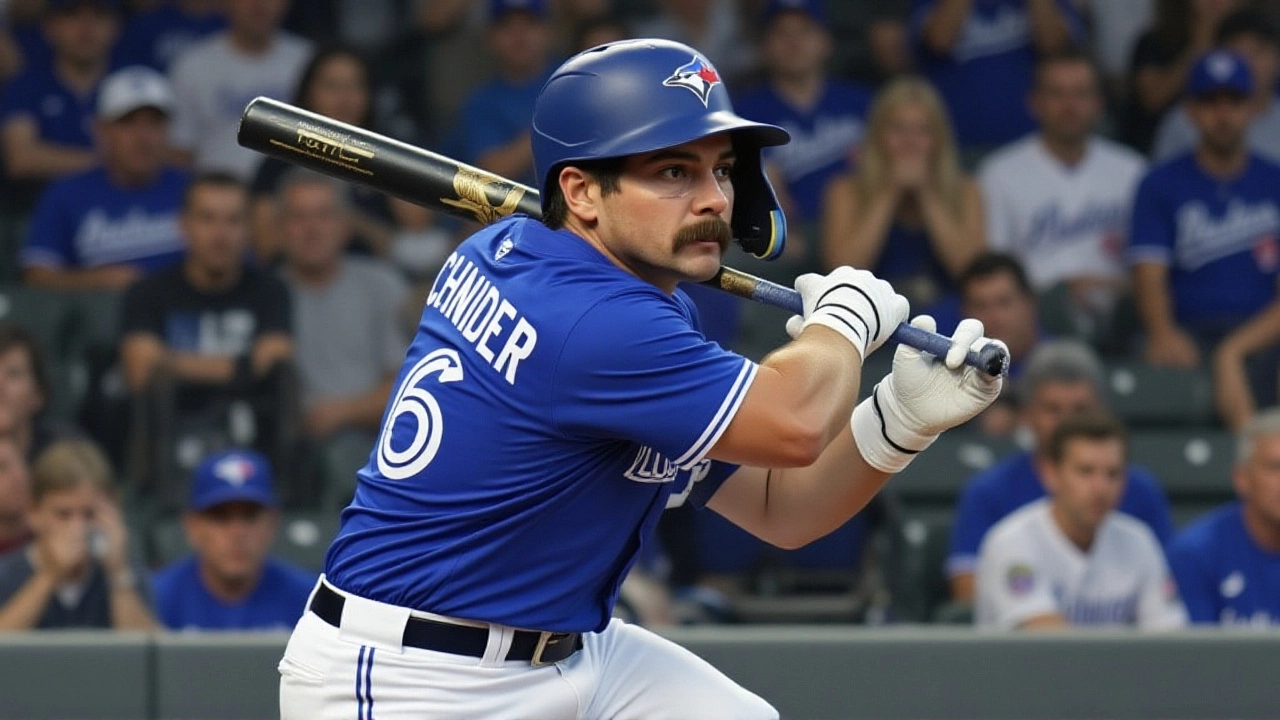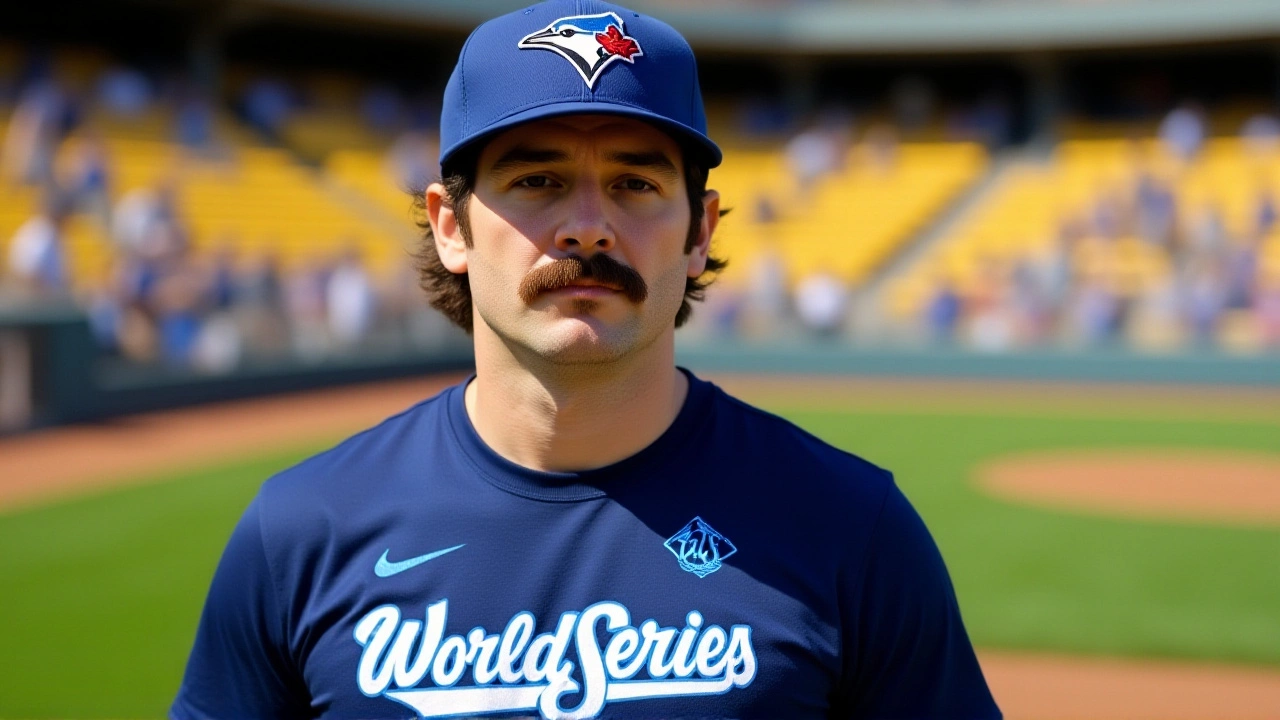On a crisp October evening at Dodger Stadium, baseball history wasn’t written by a veteran slugger or a seasoned star—it was carved by a rookie with a mustache and a story so quiet, no one saw it coming. Davis Schneider, the Toronto Blue Jays infielder who replaced an injured George Springer at the top of the lineup, swung at the first pitch he saw from Blake Snell of the Los Angeles Dodgers—and sent it soaring over the left-field fence. Two pitches later, Vladimir Guerrero Jr. did the same. The result? The first back-to-back leadoff home runs in World Series history. It happened on Game 5 of the 2025 World SeriesDodger Stadium, with the series tied 2-2, and the weight of decades of Blue Jays heartbreak suddenly lifting—just for a moment.
The Moment That Shook the Stadium
It wasn’t just a home run. It was a punctuation mark on a decade-long journey. Schneider, 24, had spent years bouncing between Triple-A and the majors, known more for his stubborn work ethic than his stats. He wasn’t supposed to be the guy leading off in Game 5. Springer, the Blue Jays’ veteran and former World Series hero, was sidelined with a hamstring strain. So manager John Schneider—no relation—turned to Davis. And the rookie didn’t just show up. He exploded.
According to MLB.com’s official recap, no team had ever opened a World Series game with two consecutive leadoff homers. The closest? The 2002 Oakland Athletics in the ALDS. But this? This was different. This was the World Series. This was Los Angeles. This was the first time the Blue Jays had reached the Fall Classic since 1993. And now, in front of a stunned, roaring crowd, they’d done something no one had ever done before.
Families in the Stands: A Small Town’s Big Night
While the stadium roared, a quiet corner of the upper deck held a different kind of noise—tears, whispered prayers, and the shaky sound of a phone recording. Davis’s family, described by CityNews as coming from a small town in Ontario, had never been to a World Series game. Until now.
“I’ve always watched the World Series,” one relative told Lindsay Dunn of CityNews during a raw, emotional interview on October 29. “This is my first go around with actually being here. Did I ever think this was going to happen? Not really. I knew Davis was going to make it to the majors, but I didn’t think this was going to happen. Like, I didn’t really go any further than that. But this is just amazing.”
His father, unseen on camera but clearly present, filmed the entire moment. The video, later aired by CityNews, showed him holding his breath as the pitch left Snell’s hand—and then collapsing into his seat, phone still rolling, as the ball disappeared into the night.

Why This Matters Beyond the Box Score
The Blue Jays haven’t won a World Series since 1993. Their last appearance felt like a farewell. For years, they were the team that came close but couldn’t close. Schneider’s homer didn’t just change the game—it changed the narrative. It proved that even in an era of analytics and hyper-specialized roles, baseball still rewards the quiet, relentless ones.
And it wasn’t just about Davis. It was about what his presence symbolized: a kid from nowhere, raised on backyard games and local leagues, standing on the biggest stage, not as a prospect, but as a force. His .278 average in the 2025 playoffs? Unremarkable. His clutch hits? Unlikely. But his presence? Unshakable.
“It’s great to have my family out here,” Davis said after the game. “It’s the first time being here.” Simple words. But for a franchise that’s waited 32 years to return to this stage, they carried the weight of generations.
The Ripple Effect: What Comes Next
With the series tied 2-2, Game 6 loomed in Los Angeles. The Dodgers, desperate to avoid a Game 7 back in Toronto, would likely shift their pitching strategy. But the psychological impact of Schneider’s homer? That couldn’t be adjusted. For the Blue Jays, it was a spark. For the Dodgers, a reminder that even the most polished teams can be shaken by the unexpected.
And for fans? It was a reminder that baseball, at its core, is still about dreams. Not just the ones players chase—but the ones families hold onto in living rooms, in small towns, in quiet kitchens, long before the lights of Dodger Stadium ever turn on.

Historical Context: The Blue Jays’ Long Road Back
The Toronto Blue Jays were the first non-U.S. team to win a World Series, doing it twice in 1992 and 1993. But since then, they’ve endured decades of rebuilding, front-office turnover, and near-misses. Their last playoff win came in 2016. Their last World Series appearance? 1993. For a generation of fans, the team was a memory.
Now, with Schneider and Guerrero Jr. leading the charge, and young pitchers like Alek Manoah and Kevin Gausman stepping up, the Blue Jays aren’t just returning—they’re redefining what’s possible. The fact that a rookie, plucked from the depths of the minor leagues, could deliver the most iconic moment in franchise history? That’s not luck. That’s legacy in the making.
Frequently Asked Questions
How rare is a back-to-back leadoff home run in the World Series?
Never before in World Series history. While the Oakland Athletics pulled off back-to-back leadoff homers in Game 3 of the 2002 ALDS, no team had ever done it on baseball’s biggest stage. The odds of two hitters in a row hitting home runs on the first pitch they see? Less than 0.03% in postseason play since 1969, according to MLB’s advanced stats database.
Who is Davis Schneider, and why did he start Game 5?
Davis Schneider is a 24-year-old infielder from Ontario, Canada, who spent most of 2024 in Triple-A. He was inserted into the leadoff spot for Game 5 because regular starter George Springer was sidelined with a hamstring injury. Schneider had only 12 regular-season home runs but showed uncanny plate discipline in the playoffs, making him a surprise but logical choice for manager John Schneider.
Where is Davis Schneider’s family from?
The family hails from a small, unnamed town in Ontario, Canada, where Davis grew up playing baseball on community fields. His father worked in construction, and his mother was a school librarian. They traveled to Los Angeles on short notice after Davis made the World Series roster, with no expectations beyond seeing him play.
What role did CityNews play in covering this moment?
CityNews, a Canadian news outlet owned by Rogers Sports & Media, provided the only on-the-ground family interview during Game 5. Their video of Davis’s relatives reacting to the home run went viral in Canada within hours, capturing the emotional human side of the historic moment. Their report was cited by MLB.com and Sports Illustrated as key context for the story’s cultural impact.
Could this change how teams value rookies in high-pressure situations?
Absolutely. For years, teams prioritized veteran leadership in October. Schneider’s performance—calm, confident, unflinching—challenges that notion. If a 24-year-old with 42 career MLB at-bats can deliver the biggest hit of his life on the biggest stage, front offices may start trusting youth more in critical moments, especially if they’ve shown resilience in the minors.
What’s next for the Toronto Blue Jays in this series?
With the series tied 2-2, Game 6 is set for Dodger Stadium. The Blue Jays will rely on their bullpen, which has been stellar in the postseason, and hope Schneider’s momentum carries into Game 7 if needed. A win would send them back to Rogers Centre for the first World Series clincher since 1993—a possibility that, just days ago, felt like fantasy.
